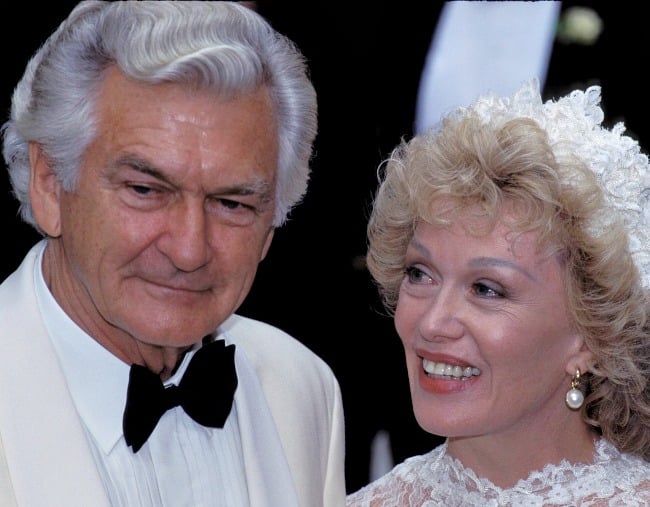
When Bob Hawke visited his first wife Hazel in her final days, he knelt down, grabbed her hand and started to sing.
“One of her favourite songs was Danny Boy, so I just quietly held her hand and sang Danny Boy to her,” Hawke told Australian Story 18 months after Hazel’s death in 2013.
“She was conscious enough to open her eyes and smile, and I think it helped a bit.”
Listen is Mia Freedman’s chat with Bob Hawke’s wife Blanche. Post continues after podcast.
It was a powerful reunion nearly two decades after the former couple’s 1995 divorce that caused dismay throughout the Australian public and caused a family rift.
Former Prime Minister Bob, who died on May 16 aged 89, is remembered as one of Australia’s most-loved, most-successful politicians.
Throughout his time in the country’s top job, Bob championed women’s rights.
In 1984, his government introduced the Sex Discrimination Act which stopped women being discriminated against based on their marital status, being pregnant or being of childbearing years.
Susan Ryan was appointed to the portfolio as minister assisting the prime minister for the status of women, and she served in that role from 1983 to 1988. The pair are also responsible for the passing of the Affirmative Action Act in 1986, which is now known as the Workplace Gender Equality Act.
His life and his politics were undoubtedly shaped by the two very strong women he loved: Hazel and second wife Blanche D’Alpuget.



Top Comments
The only thing I'm sorry for is what poor hazel had to put up with . It must have been so sad for her what Bob put her through 😪